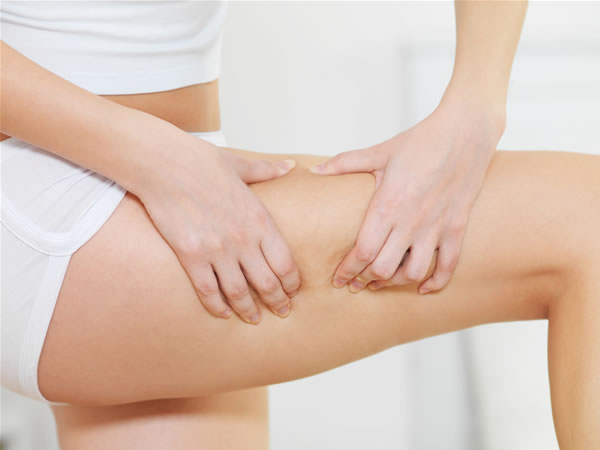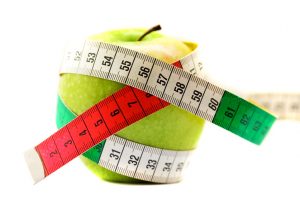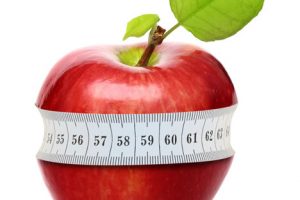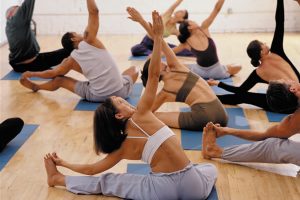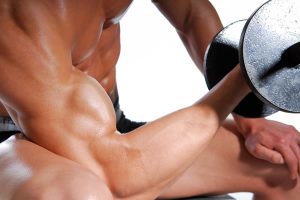How to lose thigh fat – Introduction
You may have heard quite a lot of times the saying that ‘men are from Mars and women are from Venus’. In some aspects of weight gain this saying rings truth. The different ‘sex’ hormones can be responsible for the fact that men and women tend to deposit fat easier in different regions of the body. The area of the thighs is one of them as women have the tendency to store fat in the region of the thighs easier and men in the abdominal region.
These biological differences serve a purpose in nature and have been in some way vital for the human species through time. However, nature did not have America’s next supermodel or the western society, calorie rich diets in mind when evolution was taking place and for some women can be a nightmare.
So what can you do to lose fat from your thighs? To be perfectly honest here there is not a magic solution for losing fat from the region of the thighs. However, there are ways to maximize your weight loss and we have looked into some of them in this article.
Losing thigh fat with the correct diet
Following a weight loss regime will help in reducing your weight and fat from all over the body, including your thighs. There is not such a thing a specific diet which will concentrate on the one specific area and spot fat reduction is a myth. Well I would rather say that there is no scientific evidence to say that it happens. Therefore, when you are on a weight loss program your body will break down fat from all of your body.
You may have seen diets which concentrate on abdominal fat, however, that don’t mean that your body will selectively lose weight only from the abdomen. There can be other factors which can increase fat deposition in the abdomen and a ‘good’ diet would improve some of these factors.
But let’s go back to the scope of this article which is how to lose thigh fat.So what is a correct diet? It is a balanced healthy diet which will improve fat metabolism in general.
Why the type of the diet is important?
If you consume less calories than you use you will lose weight; Yes? Yes that is in part true. However, when you lose weight you don’t lose only fat. You do lose glycogen (sugar stores), water and protein as well as fat. Some types of diets will help in improving the body’s metabolic processes which can translate in your body burning fat as fuel more efficiently, and in addition can be more beneficial for health. Fat stored in your thighs is less metabolically active, in contrast to the abdominal fat, and can be more persistent. The better your body uses fat as a fuel the more fat you will lose.
! Always remember that weight loss does not translate to fat loss only.
Long term diets
I am not a supporter of quick 1 week diets anyway. You can lose some weight on those weight loss regimes but to be honest you lose a lot of water and glycogen rather than measurable significant amount of fat. Now think about it if you want to get rid of persistent fat sitting on your thighs would a quick diet work? The answer is probably not. Opt for a diet which is longer in term.
Diet examples
Studies support that the Mediterranean style diets have positive outcomes for both weight loss and health. Moreover, diets which are lower on carbohydrates and higher on protein are considered good in improving fat metabolism. Such diet examples are the zone diet, the New Atkins diet and the Ducan diet. Always choose the weight loss regime which suits your individual preferences and lifestyle. You can also look at foods that burn belly fat to help you make up your mind.
I don’t need to lose weight; my only issue is the thighs
As I mentioned above, following a healthy balanced diet which will help you improve fat metabolism could be your best bet. You don’t necessarily need to concentrate in losing tones of weight but look into increasing the amount of fat you use as a fuel in place of other fuels such as sugar. Such diet should still provide you with adequate calories, and nutrients that your body needs.
Moreover, your somatotype (in simple words your body shape) does play a role. There a few different formal and informal categorisations of body types and shapes, but in simple words if your shape is ‘bottom heavy’ you have the tendency to store more fat in your thighs, bottom etc. Well you cannot change your body type but you can keep your weight and fitness in a level which will stop your thighs going out of control.
Some tips I have mentioned in previous articles to help you increase fat metabolism are:
- Delay having breakfast. The body uses more fat in the morning after an overnight fast and when blood sugars are low. Delaying breakfast can help you increase the amount of fat you burn as a fuel.
- Have times of fasting and feeding. Basically all it means is don’t skip meals however, avoid eating a lot of little meals all the time. This can help the body to use all the different fuel systems and it uses fat and sugars as fuels (amongst others).
- Cut down on sugars. The body loves using sugar as fuel as it is quite easy to use. The more sugar you consume the more the body depends on using sugar and it finds it harder to mobilise the fat reserves.
- Drink green tea. Some studies have shown that green tea can help in increasing weight loss. This doesn’t mean that only drinking green tea will make miracles. It is in addition to a weight loss regime, or if you are just following a healthy balanced diet everyday and are in an adequate for your needs calorie range.
- Drink coffee. Similarly with green tea, coffee is considered to help in increasing the fat you mobilise as fuel. However, do not over consume coffee as it can have negative effects in your nervous system.
How to lose thigh fat with exercise
Apart from following an adequate diet, in order to lose thigh fat fast you should consider taking on some exercise. Again spot fat burning doesn’t really work; however exercise can have 2 effects regarding your thigh fat.
First: It can increase the fat you burn and can help with any weight loss results. With exercise you use calories during the actual exercise and during recovery. After a bout of exercise the body uses calories in order to repair and build the muscles, replenish its stores etc. As you build your muscles in time you increase your resting metabolic rate. The more muscle mass you have the higher your metabolic rate which means that the more calories you use even when you don’t do anything.
Second: By exercising the area of your thighs, it may not act as burning the fat from that area only but it can help in improving the appearance. As the muscle fitness and mass increases the area will look firmer and it will stop things going south.
Not to forget that exercise is good for your health. It is always recommended to try and exercise at least 4 times a week for any gains, however, I do support that any physical activity is better than no physical activity. Just be aware that the results you will get will depend on how much you put in.
! Always consult the appropriate medical and fitness professionals before taking on exercise.
It is always recommended to follow a full body work out however, bellow are a few exercises as an example.
Tip: For maximising fat burning perform resistance exercises first and aerobic exercises last.
Always start a work out with warming up to avoid injuries. It is best to do a few minutes full body warm up, but if time is limited make sure at least you mobilise and warm the muscle groups and joints you intend to use.
Sample exercises to lose thigh fat
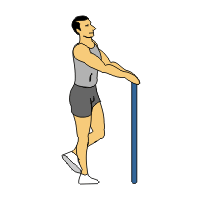 Back leg extension (standing): Standing up hold on to the back of a chair with both hands. Keep legs hip width apart and the knees soft. Push the right leg backwards and raise it as far as it is comfortable without having to lean forward. Keep your back straight but allow for your back to arch as you raise your leg. Keep the exercise slow and controlled. Bring the leg back to the ground. Repeat with the left. (Repeat x 4 on each leg)
Back leg extension (standing): Standing up hold on to the back of a chair with both hands. Keep legs hip width apart and the knees soft. Push the right leg backwards and raise it as far as it is comfortable without having to lean forward. Keep your back straight but allow for your back to arch as you raise your leg. Keep the exercise slow and controlled. Bring the leg back to the ground. Repeat with the left. (Repeat x 4 on each leg)
Start with using your own body weight and resistance. You can increase resistance by adding ankle weights.
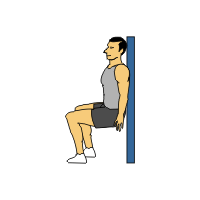 Isometric squats (With or without gym ball): Stand against a wall. Make sure your back and shoulders are straight against the wall. Keep feet hip width apart and place them slightly forward with heels on the ground. Lower yourself to the floor by bending the knees to 900 angle (until your upper legs are parallel to the floor. Shuffle your legs as you lower to the point you feel comfortable and balanced. Hold for the count of 10 and slowly straighten back up. You can perform the exercise by placing a gym ball at your back between yourself and the wall. (Repeat 4 times).
Isometric squats (With or without gym ball): Stand against a wall. Make sure your back and shoulders are straight against the wall. Keep feet hip width apart and place them slightly forward with heels on the ground. Lower yourself to the floor by bending the knees to 900 angle (until your upper legs are parallel to the floor. Shuffle your legs as you lower to the point you feel comfortable and balanced. Hold for the count of 10 and slowly straighten back up. You can perform the exercise by placing a gym ball at your back between yourself and the wall. (Repeat 4 times).
! If you are carrying too much weight squats can place a lot of strain in the knee joints and can result in injuries. Try performing the exercise by lowering only slightly (i.e. 10%) and build the fitness of your muscles. Increase the depth in time or if in any discomfort best avoid the exercise.
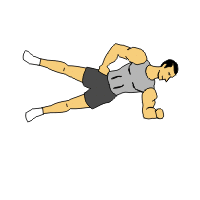 One leg circles (side lying): Lay on the floor on one side. Place arm straight under the head and the other across at the front to keep balance. Keep both legs one on top of the other straight. You can bend the leg on the knee closer to the floor slightly for balance. Make sure your body is on a straight line and you do not deviate forward or backwards. Lift the top leg a few inches. Start rotating leg as if you were writing a small circle in the air clockwise for the count of 5. Lower and rest for 30 sec. Repeat 4 times and then do the same exercise with the circles going anticlockwise. Repeat the exercise by laying on the other side, with the other leg in the same fashion. Perform the exercise slow and control. If you find it too hard you can do fewer repetitions.
One leg circles (side lying): Lay on the floor on one side. Place arm straight under the head and the other across at the front to keep balance. Keep both legs one on top of the other straight. You can bend the leg on the knee closer to the floor slightly for balance. Make sure your body is on a straight line and you do not deviate forward or backwards. Lift the top leg a few inches. Start rotating leg as if you were writing a small circle in the air clockwise for the count of 5. Lower and rest for 30 sec. Repeat 4 times and then do the same exercise with the circles going anticlockwise. Repeat the exercise by laying on the other side, with the other leg in the same fashion. Perform the exercise slow and control. If you find it too hard you can do fewer repetitions.
 The Bridge: Lying on the floor supine (preferably use a mat) place your hands on your side and shoulders straight. Bend your knees 900 with the feet flat on the floor, and legs hip width apart. Contract your abdominal muscles (see tips) Tilt your pelvis upwards slowly as you start lifting your back off the floor to form a bridge. Lift as far as comfortable. If you start losing you position you have lifted too far. Hold for the count of five and lower your body back to the ground (release abdominal muscle contraction). Repeat x 4.
The Bridge: Lying on the floor supine (preferably use a mat) place your hands on your side and shoulders straight. Bend your knees 900 with the feet flat on the floor, and legs hip width apart. Contract your abdominal muscles (see tips) Tilt your pelvis upwards slowly as you start lifting your back off the floor to form a bridge. Lift as far as comfortable. If you start losing you position you have lifted too far. Hold for the count of five and lower your body back to the ground (release abdominal muscle contraction). Repeat x 4.
Tip: You can practice prior to exercise how to contract your abdominal muscles. Imagine that there is string that goes through your tummy. Contact your tummy as if you were pulling the string and bringing your tummy in. Pull in as far as you can and then start releasing slowly until you find the point you feel most comfortable.
! Remember to keep breathing.
Tip: When you lift your back imagine as if you are peeling your spine off the floor vertebra by vertebra slowly until you reach the height which is within your comfort. To lower imagine as if you are placing your spine back on the floor vertebra by vertebra again. Keep the exercise slow and controlled.
Cycling (Static or outdoor): Cycling is a good aerobic exercise which does not work only the muscles of your lower body. Why not cycle to work or the shops, or take the family and/or friends out for a fun ride. Exercising does not have to be a separate commodity but it can be part of the everyday lifestyle and activities.
Swimming: Plain old swimming in the pool or for the lucky ones in the sea. Swimming is a good all over body aerobic exercise. In the water body weight decreases and is especially good if you are carrying a lot of body weight as it decreases the strain from your joints during exercise. You do not have to achieve 40 lengths from the word ‘go’. You can build on it slowly or even just walk up and down the pool for a start until you feel more able and fit.
Why not try performing some exercises in the water or join a water exercise class?
The above are only suggestions on how to lose thigh fat with exercise. You should always consult the appropriate medical and/or fitness professional before taking on any exercise especially if there are health issues and/or concerns. A fitness professional should be able to ensure that you are performing exercises correctly and in your own lever of ability which will minimise the risk of injuries.
